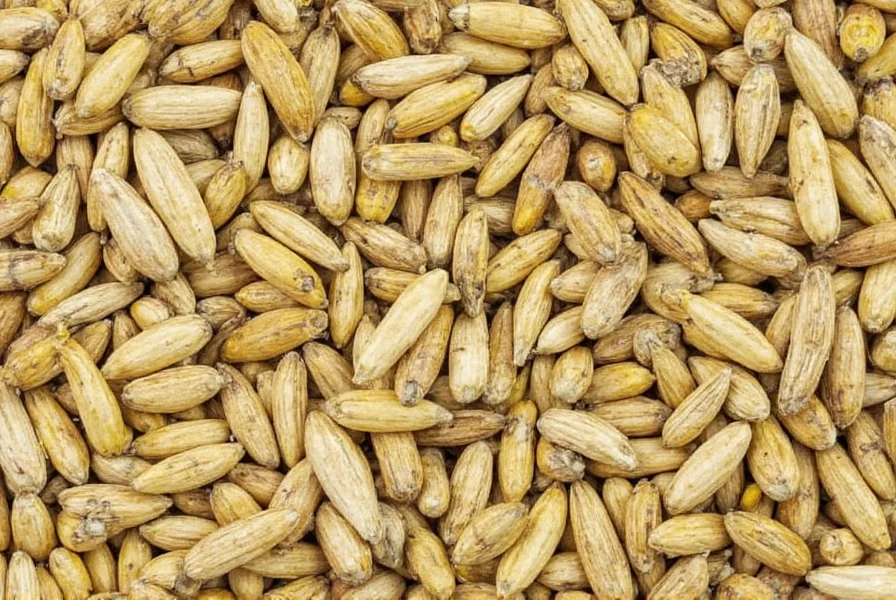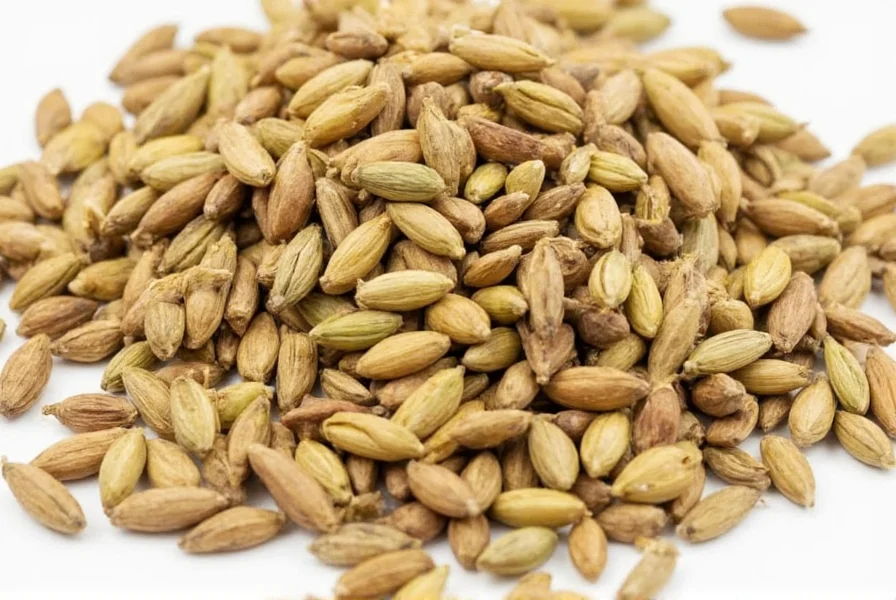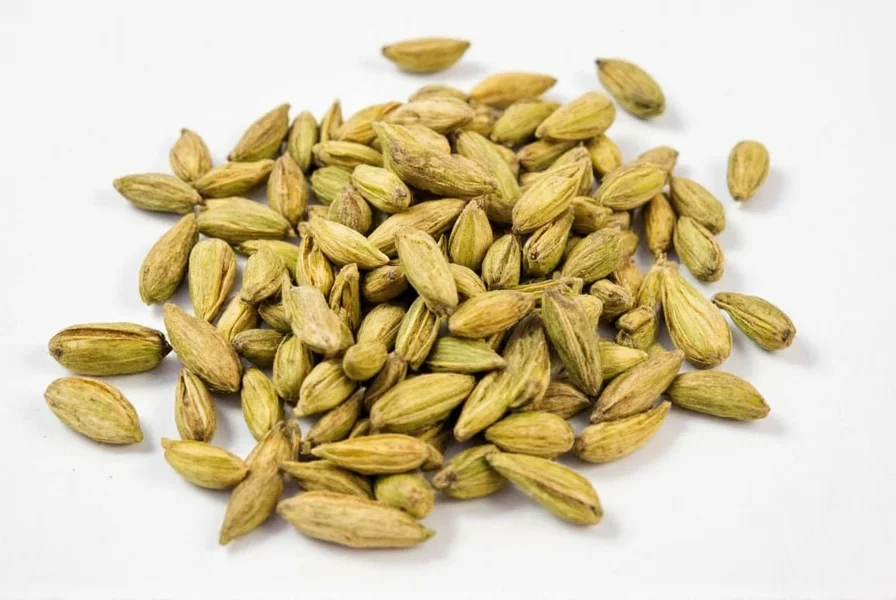Understanding Cardamom Seeds: Nature's Aromatic Treasure
Cardamom seeds represent one of the world's most valuable and ancient spices, with historical use dating back to ancient Egypt and the Indus Valley Civilization. These tiny seeds pack remarkable flavor intensity and offer numerous culinary applications that have made them indispensable in global kitchens for millennia.
Types of Cardamom Seeds and Their Characteristics
While "cardamom" refers to several related plants, two primary varieties dominate culinary use:
- Green cardamom seeds (from Elettaria cardamomum) - These come from small green pods and contain tiny black seeds with a bright, citrusy, floral flavor profile. Green cardamom is the most common variety used worldwide.
- Black cardamom seeds (from Amomum subulatum) - These come from larger, dark brown to black pods and have a smokier, more camphorous flavor due to the traditional drying process over open flames.
When evaluating how to use cardamom seeds in baking or savory dishes, understanding these differences proves essential. Green cardamom seeds work beautifully in desserts, coffee, and light sauces, while black cardamom seeds shine in robust meat dishes and certain Indian curries.
| Type | Seed Color | Flavor Profile | Best Culinary Uses |
|---|---|---|---|
| Green Cardamom | Dark brown/black | Citrusy, floral, slightly sweet | Desserts, coffee, light sauces, rice dishes |
| Black Cardamom | Dark brown | Smoky, camphorous, earthy | Meat curries, stews, hearty bean dishes |
Nutritional Profile and Evidence-Based Health Benefits
Cardamom seeds contain several beneficial compounds including cineole, limonene, and terpinolene, which contribute to both their distinctive flavor and potential health properties. A single teaspoon (about 2 grams) of cardamom seeds provides:
- Approximately 8 calories
- 0.2g protein
- 0.1g fat
- 1.9g carbohydrates
- 0.6g dietary fiber
- Significant amounts of manganese, iron, and magnesium
Research suggests cardamom seeds nutritional value extends beyond basic nutrition. Studies published in the Journal of Agricultural and Food Chemistry indicate that cardamom compounds demonstrate antioxidant properties that may help reduce oxidative stress. Other research points to potential digestive benefits, as cardamom seeds have been shown to help relax gastrointestinal muscles and reduce spasms.
When considering health benefits of cardamom seeds, it's important to note that most research uses concentrated extracts rather than culinary amounts. However, traditional medicine systems like Ayurveda have utilized cardamom seeds for centuries to support digestion, freshen breath, and promote respiratory health.
Mastering Cardamom Seeds in Culinary Applications
Understanding how to use cardamom seeds properly can transform your cooking. Unlike pre-ground cardamom powder, which loses potency quickly, whole seeds maintain their flavor when stored correctly. Here's how to maximize their potential:
Extracting and Preparing Cardamom Seeds
To access the seeds, gently crush the pod with the back of a knife or in a mortar. The tiny black seeds will spill out, ready for use. For optimal flavor release:
- Whole seeds - Best for infusing liquids like rice cooking water, syrups, or stews (remove before serving)
- Crushed seeds - Use a mortar and pestle for partial crushing when you want moderate flavor release
- Freshly ground seeds - Provides the most intense flavor; use immediately after grinding
Professional chefs recommend grinding cardamom seeds techniques that preserve volatile oils. A dedicated spice grinder or mortar and pestle works better than standard blenders, which can generate heat that degrades flavor compounds.
Culinary Pairings and Signature Dishes
Cardamom seeds pair exceptionally well with:
- Sweet applications: Apples, pears, citrus, chocolate, vanilla, and other warm spices like cinnamon and cloves
- Savory applications: Lamb, chicken, basmati rice, lentils, and creamy sauces
In Scandinavian baking, cardamom seeds feature prominently in sweet breads like Finnish pulla and Swedish kardemummabullar. Indian cuisine uses them in biryanis, kormas, and masala chai. Middle Eastern coffee traditions often include crushed cardamom seeds for their distinctive aroma.
Proper Storage Methods for Maximum Freshness
Cardamom seeds shelf life depends significantly on storage conditions. When stored properly, whole seeds maintain peak flavor for 6-12 months, while ground cardamom loses potency within weeks.
Optimal storage practices:
- Keep seeds in airtight containers away from light and heat
- Store whole pods rather than extracted seeds when possible (pods protect seeds from oxidation)
- Refrigeration extends shelf life but requires careful moisture control
- Freezing preserves flavor for up to 2 years (thaw before opening container to prevent condensation)
Signs of degraded cardamom seeds include faded aroma, loss of dark color, and diminished flavor intensity. Fresh cardamom seeds should have a strong, penetrating fragrance when crushed.
Effective Substitutes When Cardamom Seeds Are Unavailable
When you need cardamom seeds substitutes, consider these alternatives based on your recipe:
- For sweet dishes: Equal parts cinnamon and ginger with a pinch of cloves
- For savory dishes: A combination of cumin, coriander, and a touch of star anise
- Quick substitute: 1.5 times the amount of ground cardamom (less flavorful but functional)
While no substitute perfectly replicates cardamom's unique flavor profile, understanding these alternatives helps maintain recipe balance when cardamom seeds aren't available. For those exploring how to use cardamom seeds in baking specifically, a mix of nutmeg and allspice often provides the closest approximation.
Common Questions About Cardamom Seeds
Can you eat cardamom seeds whole?
Yes, cardamom seeds can be eaten whole, though their intense flavor and hard texture make them more suitable for infusing dishes rather than consuming directly. In traditional Indian cooking, whole seeds are sometimes chewed after meals as a digestive aid and breath freshener, but most culinary applications involve crushing or grinding the seeds to release their flavor compounds into the dish.
What's the difference between cardamom pods and seeds?
Cardamom pods are the protective outer shell that contains the seeds. The pods themselves have some flavor but significantly less intense than the seeds inside. Green cardamom pods are small and triangular, while black cardamom pods are larger and darker. The seeds are the tiny black particles inside the pods that contain the most concentrated flavor compounds. For maximum flavor impact in dishes, recipes often call for removing seeds from pods before use.
How do you grind cardamom seeds properly?
For optimal flavor, grind cardamom seeds using a mortar and pestle or dedicated spice grinder immediately before use. First, extract seeds from pods by gently crushing the pods. Then, grind in small batches to prevent overheating, which degrades volatile flavor compounds. If using a coffee grinder, clean it thoroughly afterward to prevent flavor transfer. The freshly ground spice should have a strong, penetrating aroma and fine, uniform texture.
Are cardamom seeds safe during pregnancy?
Cardamom seeds consumed in typical culinary amounts are generally considered safe during pregnancy. However, medicinal quantities (significantly more than used in cooking) may stimulate uterine contractions. Pregnant women should consult their healthcare provider about specific concerns, but normal culinary use in dishes and beverages presents minimal risk according to current research.
Can cardamom seeds help with digestion?
Traditional medicine systems have used cardamom seeds for digestive support for centuries. Modern research suggests compounds in cardamom may help relax gastrointestinal muscles and reduce spasms. A study in the journal 'Food Chemistry' found cardamom extract demonstrated carminative properties that could help reduce gas and bloating. While more research is needed, many people find that consuming cardamom seeds after meals supports healthy digestion.













 浙公网安备
33010002000092号
浙公网安备
33010002000092号 浙B2-20120091-4
浙B2-20120091-4